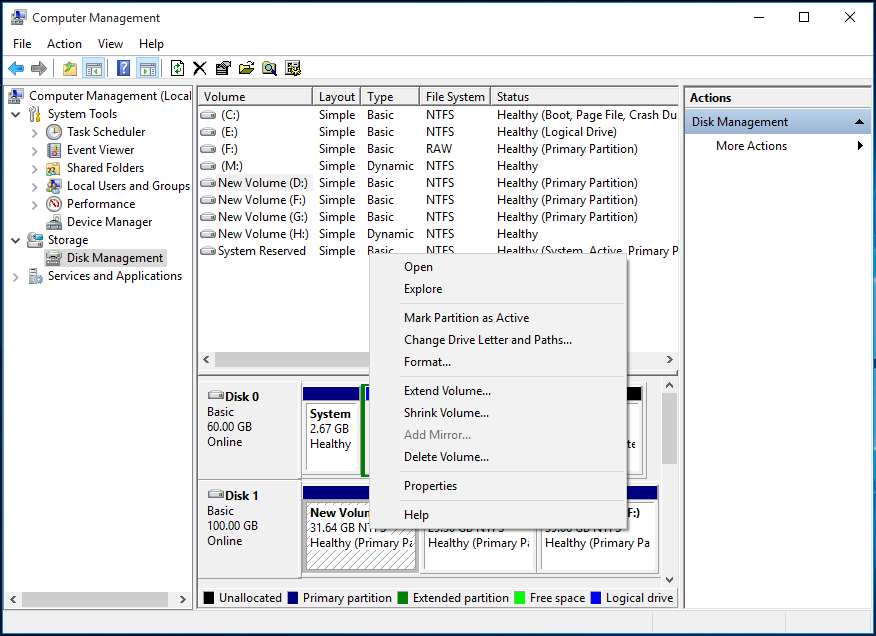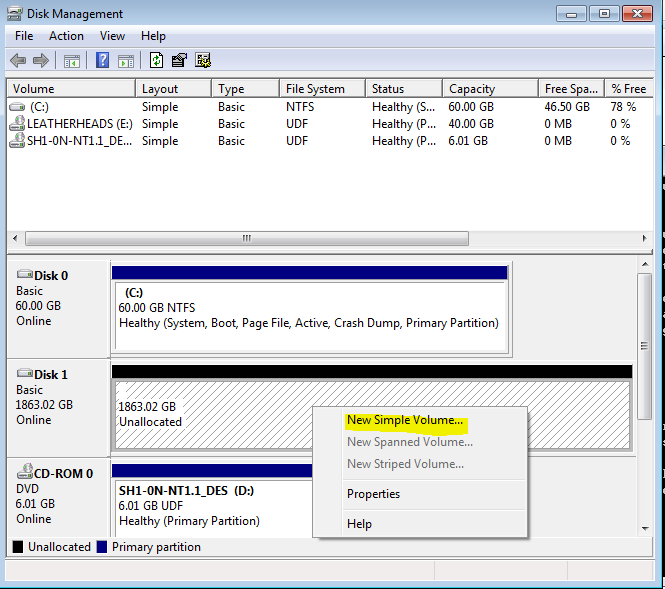

- How to reformat hard drive to ntfs how to#
- How to reformat hard drive to ntfs full#
- How to reformat hard drive to ntfs windows 10#
- How to reformat hard drive to ntfs software#
- How to reformat hard drive to ntfs Pc#
Convert to NTFS with EaseUS partition software It might take a while, especially if you’ve got a really large drive. Type convert (drive letter): /FS:NTFS, for example, convert G: /FS:NTFS.Īfter several simple steps, Windows will immediately start the file system conversion job. Choose Command Prompt (Admin) to open up an Administrator mode command.Ģ. press Windows + X keys to bring up the context menuĢ.
How to reformat hard drive to ntfs windows 10#
Here you can try to do this job in two ways: Two ways to convert USB to NTFS in Windows 10 without formatting Method 1. If there are a ton of files on the USB drive and you don’t have the free space to move them around, you can directly convert the file system of the flash drive to NTFS without formatting or losing data.

In addition, these solutions can be also applied to format SD card, external hard drive, pen drive or other removable storage devices to NTFS.

So, you can try the one that works best for your case. Some of them allow you to keep your data. So on this page, we introduce you four simple ways to format or reformat USB drive to NTFS.
How to reformat hard drive to ntfs how to#
But how to manage this job without losing data is really a bit challenging if you know little about computer and hard drive.
How to reformat hard drive to ntfs full#
For example, change the file system to copy files too large for FAT32, fixing RAW USB drive, restore USB drive back to full capacity, etc. In this case, some users might try to format the USB drive to NTFS in Windows 10 for different reasons. For better performance, people need to choose certain file systems in different situations. Pick one and then click “Okay.File systems are ways of organizing data. Windows will choose the first available letter by default, but you can override this (provided the letter you want to use is available). Click “Okay.” Jared Newman / TechHive Assign the drive a letterĬhoose a letter to associate with the drive. Do you want to delete this partition?” Verify one more time that you’re working with the Tablo drive and then click “Yes.” Jared Newman / TechHive Create a new volumeĭisk Management will now label your old Tablo drive as “Unallocated.” Right-click on it and select “New Simple Volume.” When the New Simple Volume Wizard appears, click “Next” and then verify that the simple volume size is equal to the maximum volume size. Ready? Right-click on the disk and choose “Delete Volume.” Windows will display this message: “The selected partition was not created by Windows and might contain data recognized by other operating systems. If you pick the wrong drive, you will lose data. Triple-check that you are working with the Tablo drive, because this next step will delete the volume. Jared Newman / TechHive Prepare to delete the volume (You might need to scroll down to see it.) Verify that the amount of available storage matches what you know is available on the Tablo drive. Plug the Tablo drive into one of your PC’s USB ports and look for a new disk number to appear in the Disk Management program. Jared Newman / TechHive Plug in the Tablo drive You might also see several partitions (partition 0, partition 1, and so own) for each disk. Each connected drive will have its own number (Disk 0, Disk 1, and so on). Jared Newman / TechHive Make note of all the current disk numbersĭisk Management will list all of the available drives in the bottom half of the program window. The easiest way to do this is to search “diskmgmt” and open the option that reads “Create and format hard disk partitions.” You can also search for “create and format” in Control Panel. Don’t plug the drive in until we get to that step. But if you’ve stopped using Tablo or upgraded to a larger drive, and you just want to get the old drive working in Windows again, you can wipe the data and reformat it. As such, there’s no way to copy your recordings from the Tablo drive to other storage. The problem reportedly arises because Tablo uses a Linux-based partition when it formats the drive, rendering it invisible to Windows File Explorer. Windows simply won’t recognize the hard drive when you plug it into the computer’s USB port.
How to reformat hard drive to ntfs Pc#
But it has one complicating factor: There’s no easy way to reuse an external hard drive on your PC after it’s been formatted for DVR use. Tablo is the best over-the-air DVR solution for most people thanks to its user-friendly setup and app support.


 0 kommentar(er)
0 kommentar(er)
